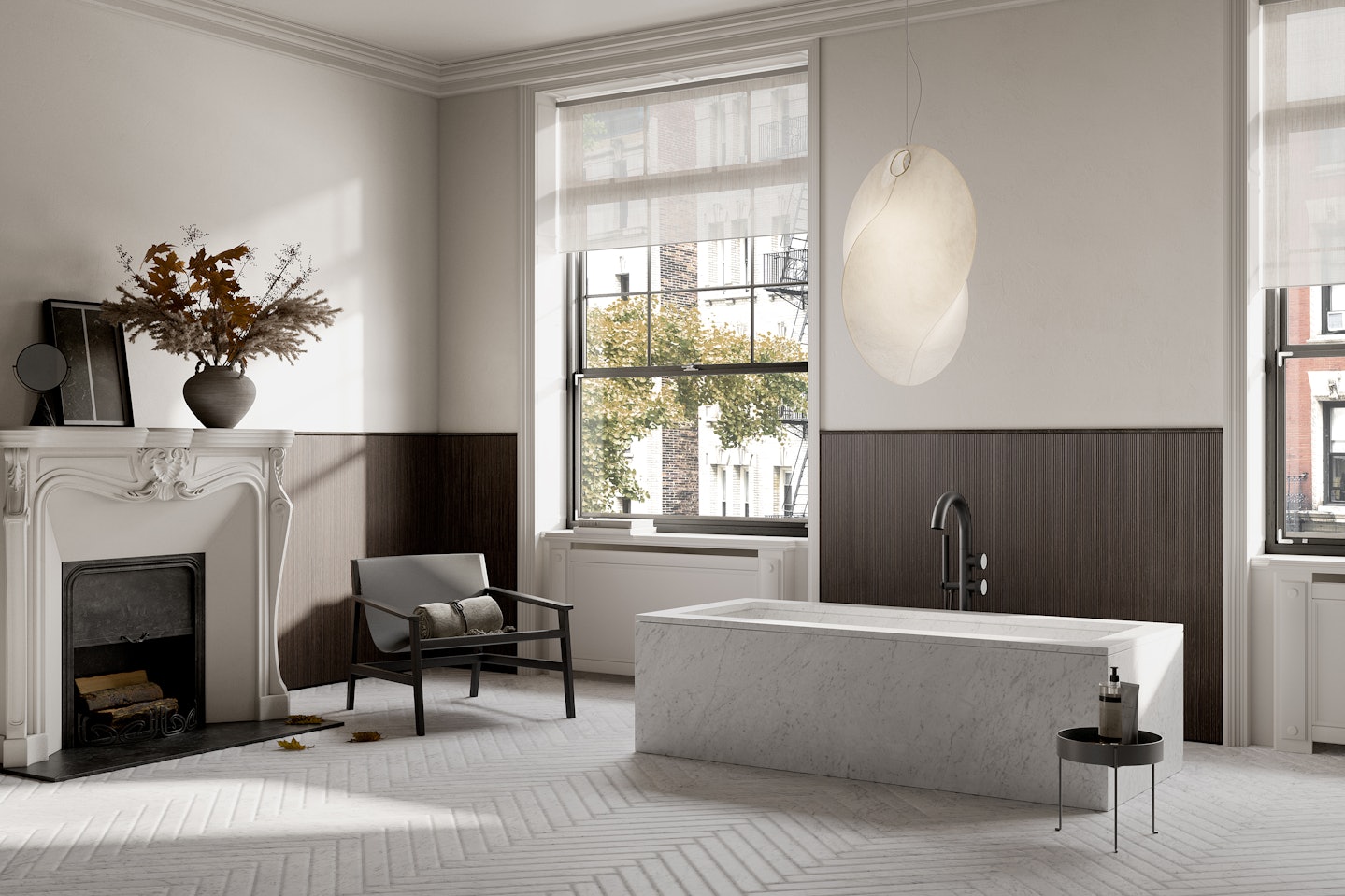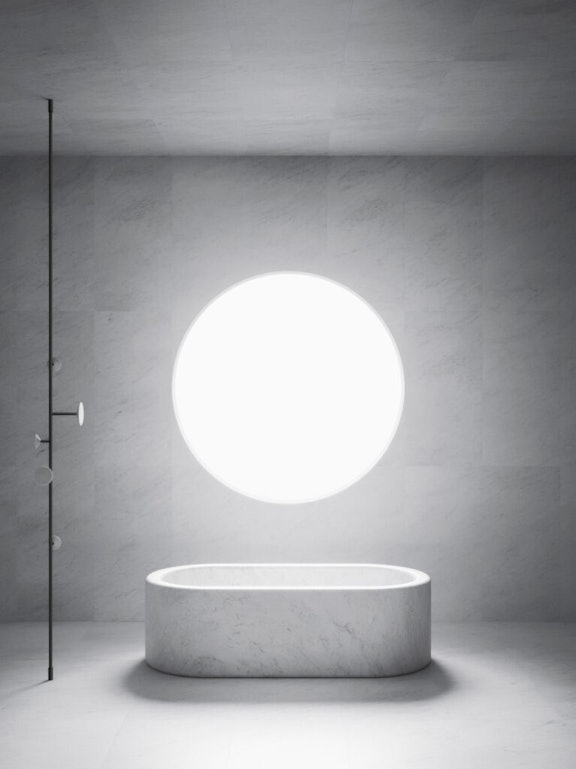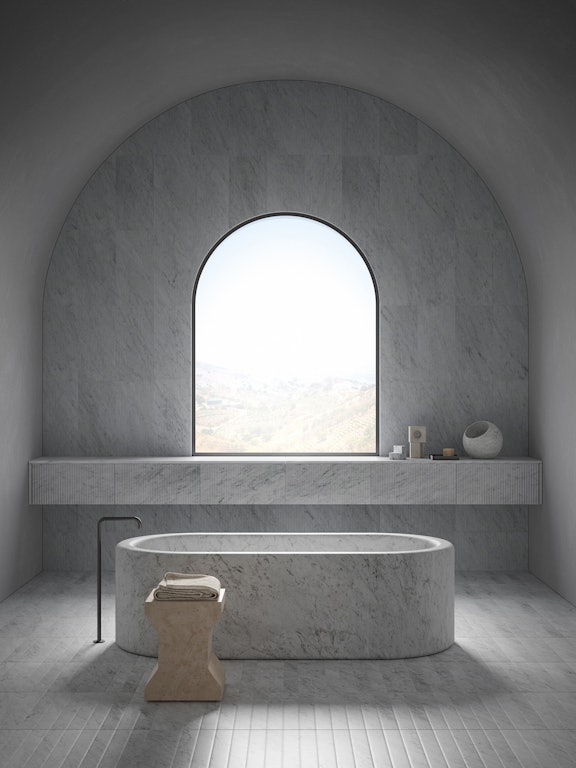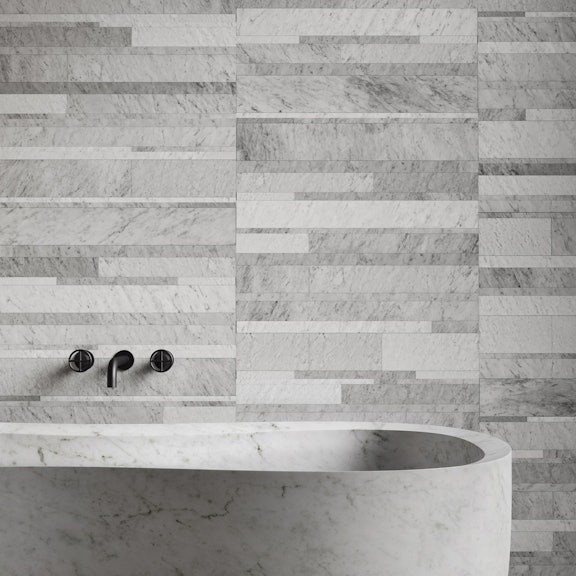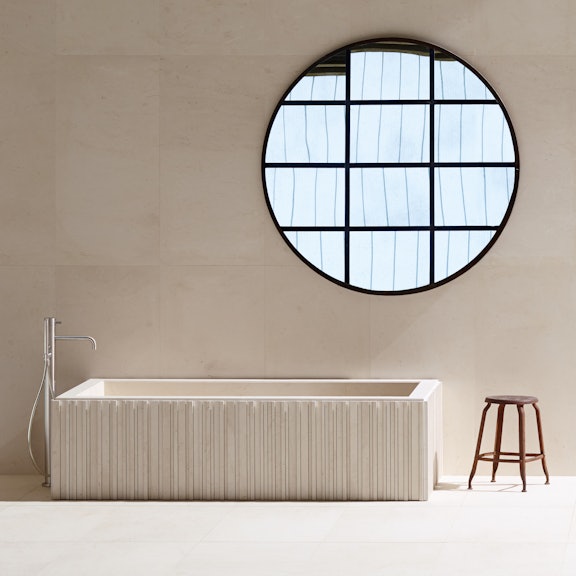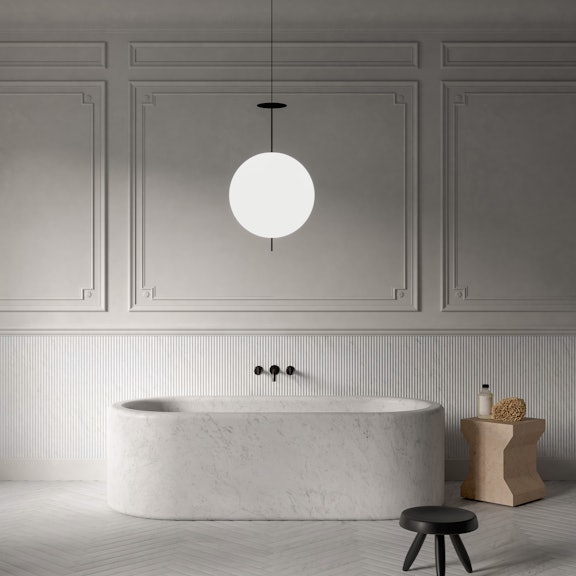The return of the bathtub to centre stage
01.2024
Natural stone plays a starring role in the return of the bathtub to the contemporary interior design scene
There’s nothing niche about a modern bathtub
The bathtub is back. After falling from grace in recent years, as showers surged in popularity for their practicality and space-saving benefits, the tub has once again found favour. Riding the wave of the idea of a bathroom as a spiritual haven rather than a merely functional space, it is being embraced as the centrepiece of wellbeing, to say nothing of its capacity to be a decorative or sculptural piece in its own right.
Key to this renaissance is the choice of material and natural stone, without doubt, plays an enormous role. The tendency to position a bathtub as a sculpture means that it must be pleasing to both the eye and the touch. With its solidity, tactility and timeless appeal, stone ticks all the right boxes.
_100.jpg?fp-x=0.5&fp-y=0.5&auto=format&w=720&h=540&fm=jpeg&q=70&fit=crop)
There’s nothing niche about a modern bathtub
For many years, the trend was to rip out bathtubs and replace them with showers or to squeeze them into any possible niche almost as though they should be hidden away. The trend now, though, is to make the bathtub a feature, if not the centrepiece, proudly showing it off in all its glory.
That doesn’t mean the niche is relegated to history, however. It is the style, rather than the location, that has changed. Among the Salvatori collection of natural stone bathtubs, the Oyster model is perfect for placing between walls, allowing you to make the most of any space you have. With its simple structure and clean lines, it works with any décor style and comes in a choice of Bianco Carrara, Crema d’Orcia, Gris du Marais®, Pietra d’Avola and Silk Georgette®, covering the colour palette from white through to dark chocolatey brown.
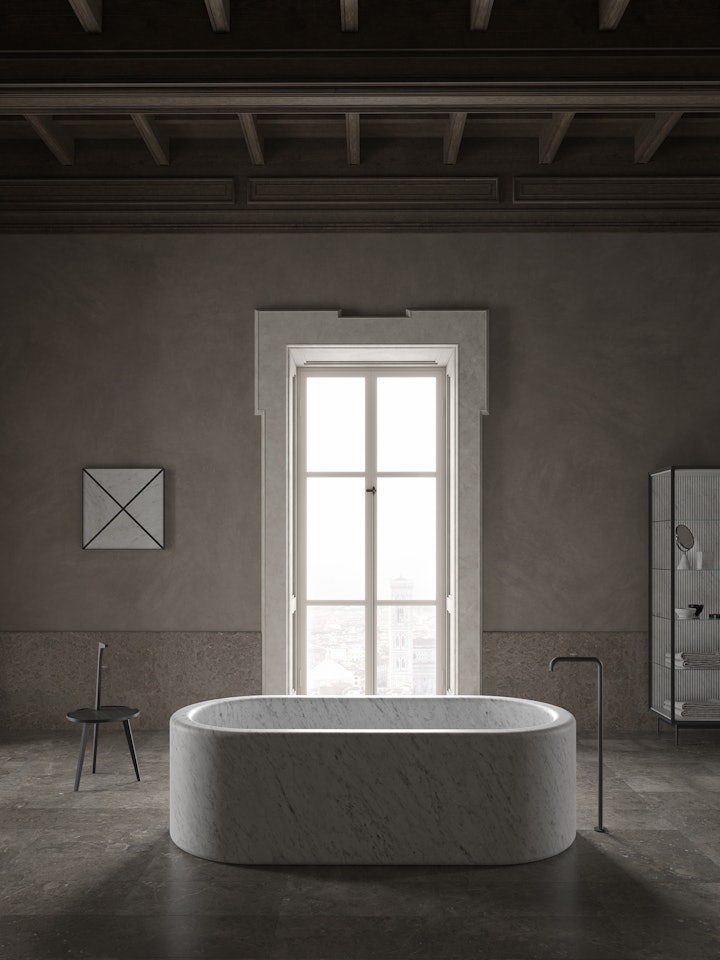
The sculptural beauty of a freestanding bathtub
With the move to positioning the bathtub proudly in the centre of the bathroom rather than hidden away from sight, freestanding tubs have come into their own. Of course, when they occupy such a commanding position, they need to deliver in terms of aesthetics, just as a precious sculpture in an art gallery would, drawing the eye, engaging the emotions and silently inviting you to reach out and touch it.
Salvatori’s freestanding bathtubs combine contemporary design with the timeless elegance of natural stone, transforming a bathroom into a haven of understated luxury. The bathroom is no longer merely a zone for performing ablutions and hygiene rituals, but has become a space where people take time to reflect and close out the frenetic pace of the outside world. Such moments are amplified when you pass them in an environment that nurtures the aesthetic as much as the soul, and a long, relaxing soak in a beautiful designer bathtub offers the perfect occasion to reconnect with nature.
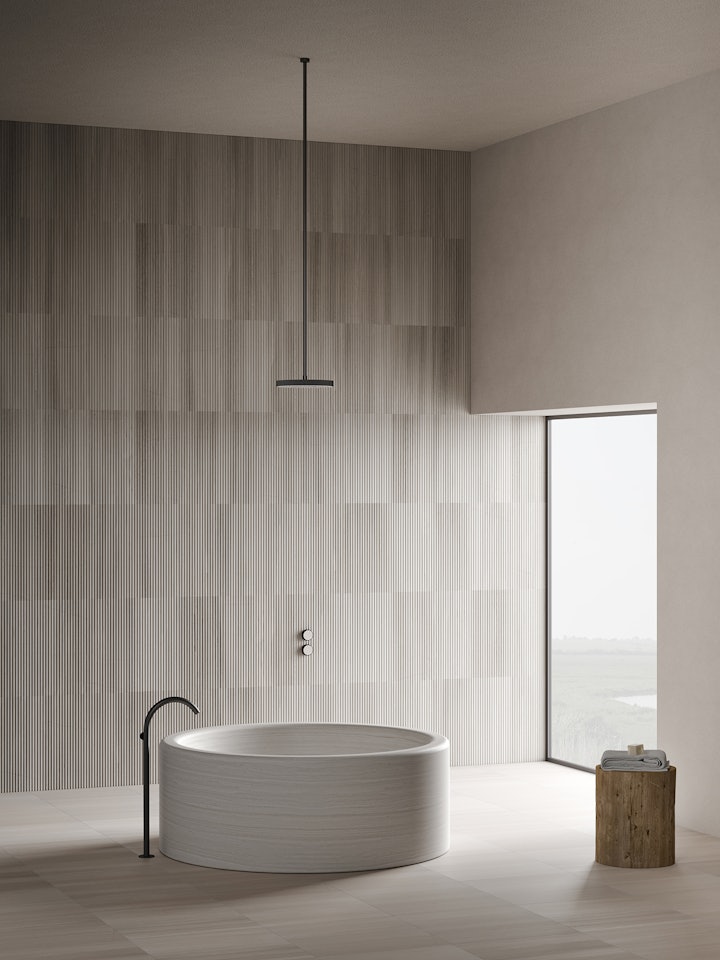
The advantages of a natural stone bathtub
A bathtub’s material has a big say in whether it is a purely functional object or is also of aesthetic merit. For many years, the main choice was acrylic or ceramic, but natural stone takes it to a whole new level. It’s fair to say that its emergence as a viable choice of material has opened up a whole new panorama of possibilities for interior designers.
Beyond its aesthetic appeal, however, stone offers other advantages. It is hardwearing and long-lasting, meaning that it is also eco-sustainable because there is no need to replace it after only a few years. It is also low-maintenance. If looked after properly, it will last for decades, if not generations and the great thing is that all you need to keep it looking as gorgeous as the day it was first installed is to give it a quick wipe with a damp cloth and neutral soap or detergent after each use. There is also another lesser known but interesting advantage and that is that stone retains heat for longer, meaning you can enjoy a lovely hot soak without needing to constantly add hot water.
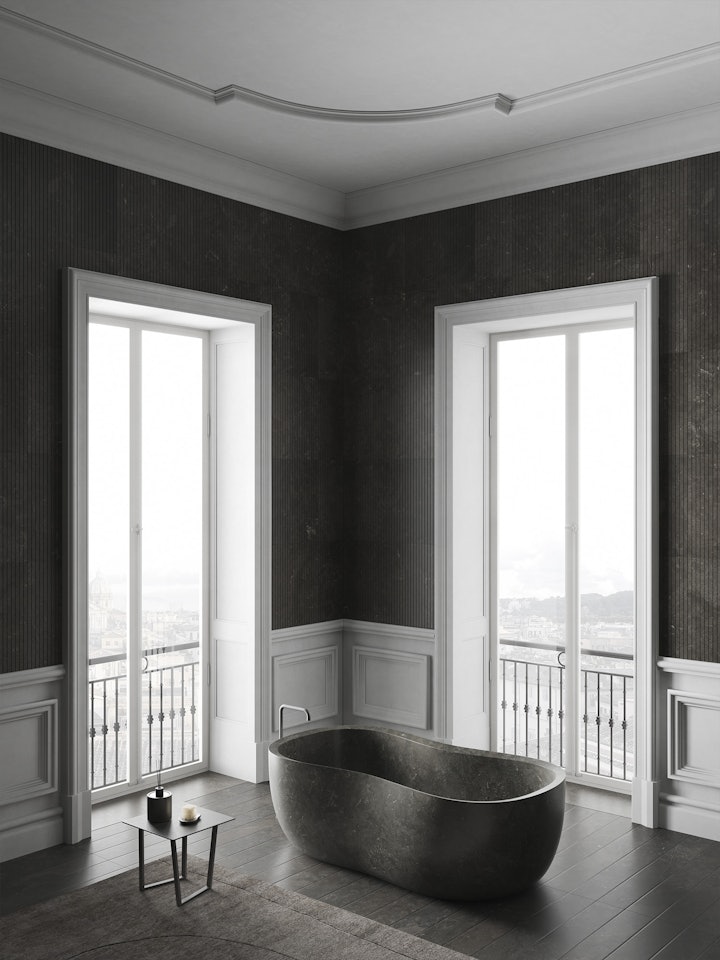
3 showstopping stone bathtubs
If you’ve now set your heart on a natural stone bathtub, how do you decide upon its shape? Unsurprisingly, the major factor to consider here is the space. The classic rectangular form of our Ishiburo is ideal for any bathroom, but its distinctive ribbed design makes it worthy of a freestanding central location. That said, it is an extremely versatile solution as it can also be positioned against the wall, in a corner or a nook. Designed by acclaimed Japanese designer Kengo Kuma, it is the perfect way to create a Zenlike atmosphere in your bathroom.
While Ishiburo is all about precise lines, the Anima freestanding bathtub is a gentle symphony of curves. Design duo Yabu Pushelberg were inspired by the idea of applying “the sensibility of clay to natural stone” and the result is an unconventional and wonderfully fluid bathtub without a sharp edge in sight. Hand-finished by our Tuscan artisans, it is an ode to the timeless beauty of natural stone which is stripped to its essence, creating a perfect harmony with the water that fills it.
For a truly monumental bath experience, Elisa Ossino’s Balnea fits the bill perfectly. Available in a choice of round and oval, each freestanding tub is carved from a single piece of marble or limestone. Showcasing the timeless splendour of natural stone, it is at once reassuringly solid yet surprisingly ethereal, making it the undisputed star of the bathroom.
Regardless of size, the bathroom occupies a special role in the home, representing an intimate space that cocoons us from the demands of a busy lifestyle and frenetic world, and the bathtub is once again at its very heart. If you want to transform your bathroom into a soothing sanctuary, we’d love to help you find the perfect designer bathtub in gorgeous natural stone.
